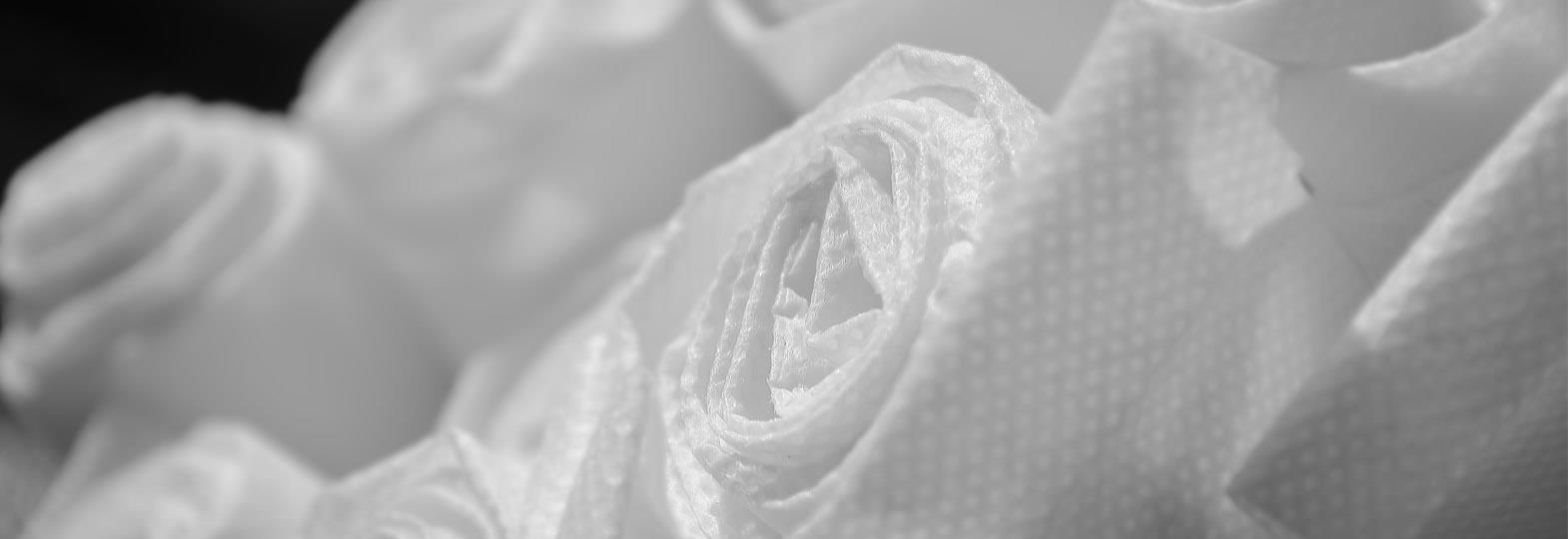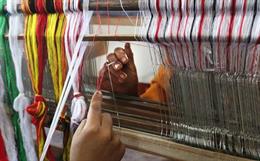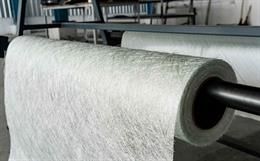Have you ever wondered about the story behind nonwoven materials? In many cases, finding out more about nonwoven materials and how they came into being can seem difficult. This article explores the story of nonwovens, including what they are, their history, how they are used today, and what the future of nonwoven materials could look like.
What are Nonwoven Materials?
The exact definition of nonwoven materials is simple: they are materials that are not made from woven fibres. Typically, a nonwoven fabric is made from a single flat, porous sheet, giving the materials unique properties compared to normal.
Generally speaking, nonwoven materials are made from short and long fibres that are bonded together; these usually have bonds formed either mechanically or chemically. This formation process, whereby the fibres are bonded instead of manually secured together, helps create a very distinct material that provides numerous unique features.
As a result, these are incredibly innovative and high-tech, valuable for a wide range of applications. In other words, nonwoven materials are unique products that can offer value for crafting and broad-scale clothing manufacturing.
The Story
While many materials that we use in modern processes are based on relatively long-standing traditions (honed and refined to industrialise their manufacturing), nonwovens are a little different. It is because nonwoven materials are often not quite as easy to create as traditional materials, which are often held together through woven patterns. As such, they rely heavily on recent knowledge and advancements to help in their development.
The Origins
When we talk about the origin of materials, we generally expect to attest this to a specific event. However, in reality, this isn’t actually the case for nonwoven materials. Indeed, nonwoven materials are incredibly hard to define in terms of origins.
However, it’s generally believed that the earliest definition of novel new nonwoven materials may have been produced at some point during the early first half of the 20th century. Indeed, by 1942, the term “nonwoven fabric” had been coined. So, it is assumed that production of these materials must have been well underway by then.
However, nonwoven fabrics’ early history was pretty slow in terms of “getting off the ground”. With this thought in mind, it’s perhaps unsurprising that a true definition for nonwoven materials didn’t appear until 1962, when the American Society for Testing and Materials (ASTM) officially described them.
At the time, nonwoven materials were explained as being “textile fabrics made of carded web or [fibre] web, held together by adhesives.” This isn’t exactly a thorough definition, but it was certainly a start and represented the earliest known history of nonwoven materials.
Development of Useful Technologies
While nonwoven materials, for the most part, are recent innovations, they are often based on old manufacturing methods and machinery. Such is the case with the Garnett Machine. This amazing machine was originally developed in the 1800s, during the Industrial Revolution, to cut back on waste scrap produced through manufacturing. The machine automatically helped card and shred waste material into a product that could be used for stuffing pillows.
How does this relate to nonwoven materials? Well, nonwoven material manufacturing processes rely largely on a blend of both short and long fibres. And, in order to obtain these, the Garnett Machine is still in use today in modern material production! As such, while the modern process of producing nonwoven materials is relatively new, the techniques involved are often based on centuries old technology, with some modern tweaks and changes for good measure.
The Role of Felt
During the origin days of nonwoven materials, numerous new products appeared on the market. Perhaps the most well-known and widely used of these exciting new materials was felt, which would play a massive role in how we use fabrics.
Felt is an incredibly old type of material, and of the different nonwoven fibres, it’s perhaps the most well-established. Actually, felt is the oldest form of nonwoven material which is still in use for widespread applications today.
Felt was traditionally formed by pressing wool fibres together, which helps create a layer of thickly compressed material that’s highly effective for numerous different properties. The exact origins of felt are unknown; however, it’s even possible that many cultures may have discovered felt independent of one another. The evidence of felt has been discovered at least as far back as the 7th century from Siberian tombs. So, it is generally assumed that felt first originated in central Asia.
Due to its simplicity, felt would have been the first type of nonwoven fabric ever made. This would then form the basis for future nonwoven fabrics to be created using synthetic processes.
However, it’s worth considering that, for a felt to be genuinely classed as a nonwoven material, it needs to meet several criteria. First of all, it must at least be made of 50 per cent (or more) man-made fibres, based on a length-to-diameter ratio of 300 or greater. However, this is slightly lower for felts with a higher ratio of around 600.
Types of Nonwovens
While felt is still used as a modern nonwoven material, there are plenty of options on the market these days.
The unique properties and features enable nonwoven materials to be readily used in numerous applications. In fact, they are excellent options to consider for people looking for a material that’s versatile, durable, and provides countless other benefits.
There are numerous different types of nonwoven materials on the market, and no single type is necessarily right for every application. Some of the key material types and manufacturing processes used in modern production methods include the following options:
• Spiny: During spinning processes, high pressure water jets entangle the fibres in a material, providing a strong layer accordingly.
• Heat-bonded: As one of the most common strategies for creating nonwoven materials, heat bonding exposes a fibre mesh to intense heat and reinforcement chemicals; these bond after the heating and cooling process, creating a layer of fully reinforced, strong material.
• Wet nonwoven: During wet processes, numerous different types of fibres are usually mixed together to form a slurry of materials. These are then transported to a network forming mechanism which dries the slurry into a strengthened sheet of material.
• Spunbonding: With spunbonded nonwoven materials, the process of extruding, stretching, and reforming materials helps create a network of fibres that form chemical and thermal bonds with other fibres.
• Stitch: Using a knitting method, manufacturers can create a dry nonwoven fabric material that features a knitting coil structure that helps reinforce, support, and strengthen fibre mesh layers throughout the material.
• Acupuncture needling: Another form of nonwoven fabric is acupuncture needling, which serves to create fluffy fibre nets; these helps support reinforcements in the material.
Properties of Nonwovens
The following are some of the properties exhibited by nonwoven materials.
Lightweight Nature
One of the main benefits of nonwoven materials for many applications is their excellent, lightweight nature. Since nonwoven materials often use incredibly fleecy materials, they are very lightweight in nature. This trait can lend itself readily to numerous applications; for example, it’s ideal in scenarios where a less dense material is needed (e.g., in creating clothing) to reduce the weight of a solution.
Softness
Another key benefit of nonwoven materials is that they tend to be incredibly soft to the touch. The gentle nature of nonwoven materials ensures that they are comfortable for applications such as within vehicles and the like. The softness is thanks to the fine 2-3D fibres that are used in the creation of nonwoven materials.
Non-toxic
Another benefit of nonwoven materials is that they provide excellent non-toxic properties. The non-toxic nature helps ensure that most nonwoven materials are safe to handle and use. This makes nonwoven materials increasingly common in applications requiring direct handling by the user.
Modern Applications of Nonwoven Materials
There are many applications for nonwoven materials in the modern market, which has irrefutably influenced many different manufacturing processes. Some of the main uses of nonwoven materials these days, aside from just clothing and equipment, include:
• Thermal insulation
• Acoustic insulation
• Fire hazard protection
• Aerospace applications
• Puncture-resistant materials
• Industrial filters
• Vehicle seating
• Trunk liners
• Welding protection
These are just a handful of the applications for nonwoven materials. Since new innovations are being carried out, there’s still room for even more use of these materials in new fields, depending on the requirements of advancing technologies.
Looking to the Future
Undoubtedly, nonwoven materials have already greatly impacted the world around us, both historically and in the modern day. But what does the future of nonwoven materials look like?
For the most part, it seems likely that nonwoven materials will continue to grow and become ever more complex as time goes by. Their incredible ability to provide thorough, safe, and immensely resistant solutions has irrefutably made them valuable aspects of modern manufacturing, and it doesn’t seem likely that this trend would change any time soon. However, as new technologies and innovations are made, the ways in which we use nonwoven fabrics may also continue to change and evolve – making these excellent materials more versatile than ever before.
With growth rates in the nonwoven fabric market rising annually at present, increasing by approximately 18 per cent per year, it’s safe to say that the opportunities for the field are likely to remain bright as we look to the future, too.







